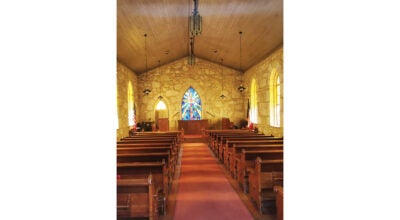Study touts Co-Lin impact in community
Published 6:00 pm Wednesday, October 12, 2011
Copiah-Lincoln Community College gives morethan academic degrees to local residents.
The school’s presence brings a significant economic investment inthe area, according to a draft version of a study conducted byCo-Lin.
The study indicates that Lincoln County is among the highestfinancial beneficiaries of Co-Lin’s activities in the area.
Lincoln County-Brookhaven Chamber of Commerce leaders echo thisbenefit.
“Co-Lin’s presence in our community most definitely has asubstantial impact far beyond their work in education andtraining,” said Cliff Brumfield, executive vice president of thechamber.
If considered a business, Co-Lin is one of the largest in the area,Brumfield said.
The study records Co-Lin’s economic and community service impactthroughout its seven-county area, which includes Adams, Copiah,Franklin, Jefferson, Lawrence, Lincoln and Simpson counties.
In 2010-11, the school recorded $684,868.58 spent in LincolnCounty. This is the second-highest amount spent by Co-Lin in any ofits counties, behind only Copiah County’s $731,131.41.
That spending includes utility bills, office supplies, furnitureand education supplies.
Co-Lin President Dr. Ronnie Nettles said year to year some countiesmay see a spike in spending depending on which local contractorsare involved with renovation projects. He added that utility billsare a significant part of its expenditures to local counties.
The school also recorded high spending in Adams and Simpsoncounties, where Co-Lin campuses are located.
Co-Lin’s Wesson campus, its largest, is located in Copiah County,very near the Lincoln line, but Lincoln recorded higher levels ofspending than other counties where Co-Lin campuses are located.
Lincoln came out ahead of Copiah County in payroll spending. OfCo-Lin’s payroll, $3,080,487.67 was spent in Lincoln County. Thatamount was $3,041,952.40 in Copiah County.
In discussing Co-Lin as a business, Brumfield pointed to thepayroll figures as an indicator of Co-Lin’s significance.
“They (Co-Lin) happen to be one of the larger employers in the areaas well as one of the better paying ones,” Brumfield said.
Co-Lin also plays a role in attracting new businesses into thearea, Brumfield said.
“Employers and industries that would consider moving here giveconsideration to Co-Lin’s presence,” Brumfield said.
Lincoln County students also received the most financial aid fromCo-Lin. In 2010-11, Lincoln County students received $3.5 millionin financial aid.
Those financial aid figures include both need and merit-basedassistance.
Nettles said that the amount of scholarship money going to eachcounty compares pretty closely the percentage of Co-Lin’s studentbody that comes from each county.
In total, the school awarded $19.2 million in financial aid in2010-11. In the fall of 2011, 73 percent of students received somekind of financial aid.
The study also recorded the contributions each county makes to theschool. The counties in Co-Lin’s seven-county area are required tofinancially support the school.
Lincoln County supports Co-Lin with a 5.00 millage rate whileCopiah levies a 5.46 millage rate. Simpson has the highest millagerate for Co-Lin, at 6 mills. The highest legally allowed millage is6 mills.
At Lincoln’s millage rate, the county’s most recent yearlycontribution to Co-Lin totaled $1,207,007. That money does not gointo the school’s general budget, though.
“We are pretty restricted in how we can spend that money,” said Dr.Jane Hulon, vice president of instructional services.
The funds contributed by the counties are reserved for maintenanceand improvements to the college grounds and buildings, Hulonsaid.
Nettles said the money Co-Lin receives from its seven counties ishigher than the state average.
“We are blessed with some really great support through ourcounties,” Nettles said. “We are very fortunate.”





